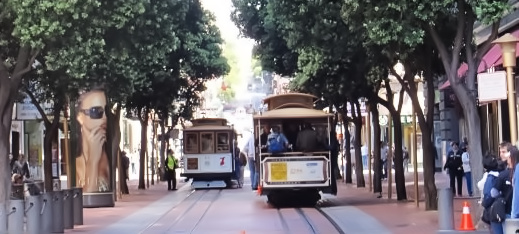Uni V: The way we are talking about morality and the guy who got eaten by the bear

In this post:
I discuss some of the things I learned or not in the first lecture of PHIL 181. I think around the box and question the methodology of the course as failing to reflect reality because of its use of dichotomous thinking to formulate and answer questions. And finally, I argue whether a more complex approach grounded in the laws of physics or the laws of PopPhil would not be the most fun if not necessarily the most adequate approach for this kind of moral reasoning.
As I had said before, I am half following PHIL 181 on Yale’s website. I haven’t advanced much because, surprise, surprise, I’m busy. However, I started the introductory video and it got me thinking, and thinking again, about the nature of reality and how we frame our moral judgements.
I am going to defy the convention of what I heard in the video with a little bit of extra thinking. I don’t necessarily censure their approach, I am fascinated by it as I always am by things that question my schemas; I am not going to self-censure either for thinking around the box. Challenging what one doesn’t understand completely is rather easy, remember that we are talking about PHIL 181 with the tools and conventions of PopPhil NoNumber and let’s be free.
The trolley problems. What are these trolley problems? I was going to write about them and describe them clearly but, uff, somebody else already did, the professor in the video, and I figured if people are not interested enough to watch a ten minute part of a video then, will they want to read about what’s said on it? Anyway, we have to have a common point of understanding. The trolley problems go like this: there comes a trolley out of control, pull the lever to direct the thing towards one or another cohort of vulnerable people. Is your choice moral or immoral under the circumstances?
In the first consideration of the problem we are given two choices, both of them horrible and morally unacceptable but these are the only choices that are supposed to be available to us. And we are led to believe that these are the only two choices that exist, either diverting the trolley to one person, or diverting the trolley to five persons. Why are there not any other choices? Why are we being deliberately trained to believe that our only choices are to cause more or less harm? Let’s see, how about in the same few seconds in which we ponder the question and pull the lever, or push the fat man so that he falls, how about we scream a warning loud enough to have the one person move out of the way? But even before we are put in the position to pick whom to harm, why don’t we require that all trolleys in the city carried loud alarms and flashing lights to warn pedestrians in case that such an emergency occurs? Why does exercises in morality depict only the extremes? And why are we still cultivating dichotomous thinking in our most modern centers of higher learning?
I understand that from an academic point of view you have to simplify a problem to be able to teach it. Or do you? How about we start the process from the point of view of confusion and then create clarity out the chaos as best as we can? Just for a split second, we can accept that real life problems have a high chance of being wicked. And then accept that we can deconstruct and simplify until we have aspects that we can address in apparent isolation but always with the understanding that this apparent isolation is mechanical and convenient rather than all-encompassing. And this acceptance has to be the clearest and most explicit assertion from the beginning even if there is an underlying assumption that is going to be so even if we don’t state explicitly. Context; we expect students enrolled in higher education not to be completely naive, but are humans not naive in anything that they had not experienced and internalized before?
Back to the trolley problems. In the formulation of this problem there is a lack of time scale that is problematic. In the formulation of an academic problem you have a specific time to think about the question. And the question is, is it moral or not? But also, the choice of moral or not moral doesn’t account for reality, because in real time your choices will be limited by the time that you have in which to consider them. Is there a lack of imagination as well when you just consider two harmful alternatives? Is there really no other choice or are we economizing too much by reducing the number of alternatives to something simplistic?
Not everything can be black and white but not everything can be distributed along a greyscale continuum; there are indeed things that are one thing or the other because even if we’d had infinite number of choices most of those would be irrelevant to the decision make process at hand. I think we tend to oversimplify because complex situations require a lot of energy and focus to process. I argue that the most logical dichotomous conundrum would then be to simplify or not to simplify, and when it is the most successful strategy to do one thing or the other. When is it moral and/or desirable to limit the number of choices and when is it greater complexity the best step in solving morally complex problems?
Additionally, let us be logical, if the large gentleman atop the bridge has enough mass to stop a hurtling trolley, what makes anybody think he will be dislodged that easily? Somebody is either messing with our choices here or doesn’t understand the laws of physics.
Another thing one ought to consider, if the guy behind me see me ducking and doesn’t follow suit, it was jut a matter of time for him to be eaten by something or other or get hit by a trolley. A regrettable tragedy, but not a grounds for moral judgement on my part.
Do you agree? Share your opinion in the comments if you’d like.

It was just a matter of time, not my fault.
Did you like this post?
Then you will probably like:
References and Resources:
- And trolley problems as part of the course Phil 181 at Yale, just in case you are curious.